How To Find the Safest Family Vehicle
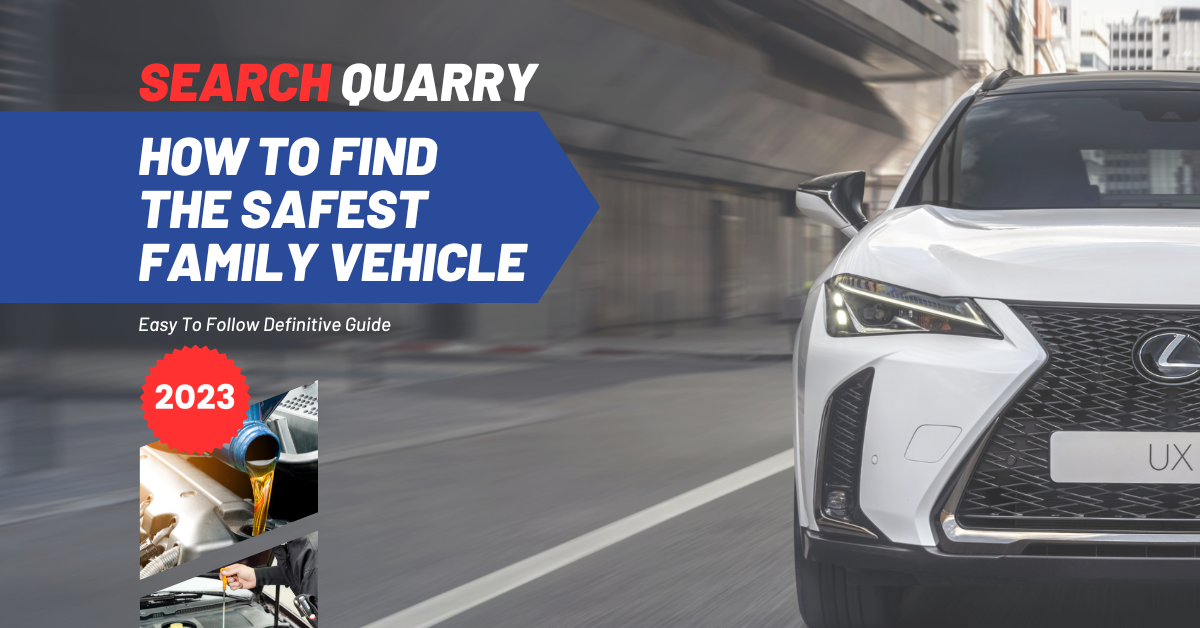
When deciding what vehicle to choose for your family, safety is paramount. Selecting the safest car for your family can be daunting, but some free online vehicle research tools can make this journey much easier. We will explore the factors contributing to vehicles with excellent safety ratings, crash ratings, accident statistics, and critical safety features. Many family vehicles on the market have all the latest safety features without sacrificing performance or value. The following guide will highlight key components in finding the safest family vehicle.
Search Quarry’s Guide to Finding the Safest Family Vehicle
How To Find the Safest Family Vehicle
What Makes the Safest Family Vehicle?
The Importance of Vehicle Crash Ratings
Key Safety Features to Consider in a Family Vehicle
Active Safety Features
Advanced Safety Technologies
Vehicle Child Safety Features
What is the Most Popular Family Vehicle
What Are the Safest Vehicles of All Time?
Tips For Researching a Safe and Affordable Family Vehicle
Safest Family Vehicle – FAQs
What Makes the Safest Family Vehicle?
Some key factors to consider when shopping for the safest vehicle for your family include crash ratings, vehicle safety features, and accident statistics. Two main organizations monitor these safety factors, make recommendations and set safety standards in the United States. The National Highway Transportation Administration (NHTSA) and the Insurance Institute for Highway Safety (IIHS). These organizations offer recommendations and ratings to consumers to help identify the safest family vehicle. While both these organizations offer similar information, such as crash ratings and accident statistics, they also focus on slightly different aspects of vehicle safety.
Price is also a principal factor for almost everyone shopping for a vehicle, and in the last couple of years, there has been a significant increase in both used and new vehicles. People use a few well-respected brands to help them identify the best values, such as Kelly Blue Book or Edmunds. These vehicle evaluation websites allow consumers to find safe vehicles within their budgets and ensure they get a good rating at a fair price.

The Importance of Vehicle Crash Ratings
Crash ratings are critical when searching for a safe family vehicle. Organizations such as the IIHS and NHTSA conduct extensive crash tests and assign ratings based on a vehicle’s ability to protect its occupants during an accident. The IIHS and the NHTSA are the two main organizations that conduct vehicle crash testing, rate vehicle safety, and ensure that vehicles meet minimum federal safety standards. Both these organizations conduct vehicle crash testing and evaluate vehicle safety features; however, they each use a slightly different rating system.
What is the Purpose of the NHTSA
The National Highway Traffic Safety Administration (NHTSA) is a federal safety regulatory agency within the US Department of Transportation (DOT). The primary purpose of the NHTSA is to promote and regulate safety on the nation’s roadways. Here are some of the key objectives and responsibilities of the NHTSA:
- Vehicle Safety: The NHTSA establishes and enforces performance standards and regulations for motor vehicles and equipment, including crashworthiness, occupant protection, and vehicle-to-vehicle communication systems. They also conduct research and develop programs to improve vehicle safety technologies.
- Traffic Safety: The NHTSA works to reduce injuries and fatalities on U.S. roadways through various initiatives. They develop and promote educational programs aimed at increasing awareness of safe driving practices, impaired driving prevention, seat belt use, and child passenger safety.
- Enforcement: The NHTSA supports law enforcement agencies by providing training, resources, and guidelines to enforce traffic laws effectively. They also administer grants to states for programs such as sobriety checkpoints and seat belt enforcement campaigns.
- Research and Data Analysis: The NHTSA conducts research and collects data related to traffic safety, vehicle crashes, and human factors. This information is used to identify trends, develop safety policies, and evaluate the effectiveness of existing regulations and programs.
- Defect Investigation and Vehicle Recalls: The NHTSA investigates potential safety-related motor vehicle and equipment defects. If a defect is found, they have the authority to order recalls to protect the public from unreasonable risks.
- Fuel Economy Standards: In conjunction with the Environmental Protection Agency (EPA), the NHTSA sets Corporate Average Fuel Economy (CAFE) standards for new vehicles. These standards aim to improve fuel efficiency and reduce greenhouse gas emissions.
The NHTSA plays a critical role in managing and enhancing the safety of motor vehicles, reducing traffic-related injuries and fatalities, and ensuring compliance with vehicle safety standards. The NHTSA website offers consumers a Free Vehicle Rating Tool that allows consumers to research vehicles by year, make, and model. It is a helpful resource that helps guide consumers to safer vehicle purchases.
NHTSA Crash Test Rating System
The NHTSA crash rating system uses a 5-star rating system, with a 5-star rating being the best and 1-star being the worst. The NHTSA crash test ratings are an average of 3 categories: front crash test safety ratings, side crash safety ratings, and rollover safety ratings. The NHTSA focus is keeping people safe on the roadways and enforcing vehicle safety and performance standards. This government organization is part of the Department of Transportation (DOT), which mandates Federal Motor Vehicle Safety Standards in the United States.
What is the Purpose of the IIHS
The Insurance Institute for Highway Safety (IIHS) aims to reduce injuries, deaths, and property damage resulting from motor vehicle crashes. The IIHS is an independent, nonprofit scientific and educational organization funded by auto insurance companies. The main objectives of this organization are as follows:
- Conducting Research: The IIHS conducts extensive research on various aspects of vehicle safety, including crash tests, vehicle design, crashworthiness, and crash avoidance technologies. This research helps identify effective measures for improving vehicle safety and reducing the severity of injuries in crashes.
- Evaluating and Rating Vehicles: The IIHS conducts rigorous crash tests and evaluates the crashworthiness and crash avoidance capabilities of vehicles. Based on their evaluations, they provide safety ratings, such as “Top Safety Pick” and “Top Safety Pick+” to recognize vehicles that perform well in their tests. These ratings help consumers make informed decisions when purchasing vehicles. A vehicle history report on a used vehicle might also include IIHS reporting that helps consumers understand any potential safety concerns.
- Promoting Vehicle Safety Technologies: The IIHS promotes the adoption and use of advanced safety technologies by evaluating their effectiveness and conducting studies on their impact. They encourage automakers to develop and implement features such as forward collision warnings, automatic emergency braking, lane departure warning, and adaptive headlights, which can help prevent or mitigate crashes.
- Advocacy and Policy Influence: The IIHS uses its research findings and expertise to advocate for policies and regulations that enhance vehicle safety. They work with lawmakers, government agencies, and other stakeholders to promote the adoption of effective safety measures, including stronger vehicle safety standards, improved infrastructure, and safer driving practices.
- Raising Public Awareness: The IIHS aims to educate the public about vehicle safety issues and promote safe driving behaviors. They publish reports, conduct outreach programs, and provide resources to help consumers understand the importance of vehicle safety and make informed choices.
By focusing on research, testing, ratings, advocacy, and public awareness, the IIHS contributes to the improvement of vehicle safety standards, encourages the development of safer vehicles, and helps consumers select vehicles that offer higher levels of crash protection and advanced safety features.
IIHS Crash Test Rating System
The IIHS crash rating system uses two main aspects of safety: crashworthiness and crash avoidance mitigation. Instead of a 5-star rating system the NHTSA uses, the IIHS buckets safety criteria into four categories: Good, Acceptable, Marginal, and Poor. The IIHS will give its crash testing ratings at the beginning of the year because they conduct its crash testing in a laboratory before vehicles are released to the marketplace. However, accident safety ratings for cars are delayed by a year. This is because accident reporting is calculated from the beginning of January to the end of December, so the statistics for “safest car by accident” is delayed by a year. For example, the “safest car by accident” for 2023 won’t be available until the beginning of 2024.
“The “safest car by accident” for 2023 won’t be available until the beginning of 2024.”
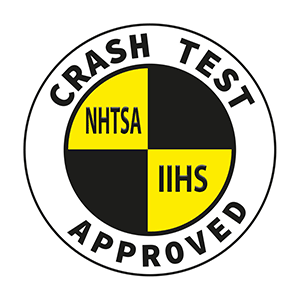
NHTSA and IIHS Safety Standards Lead To Safer Family Vehicles
Accident statistics can also provide valuable insight into a vehicle’s overall safety. By analyzing data on real-world accidents, you can identify trends and determine which cars have the best track record for preventing or minimizing injuries. Both the IIHS and NHTSA are standards that can be used to determine the safest family vehicle. They perform extensive crash testing, safety features, and collision avoidance systems. It’s a best-practice procedure to use both resources when determining the safest vehicle option for your family.
Newer Vehicles Are Typically Safer
Modern vehicles boast advanced technology and standard safety features. Most new cars are now equipped with collision alerts, emergency braking systems, cameras, and sensors strategically placed around the vehicle to heighten road awareness. The NHTSA mandates some of these safety features for all new cars. According to NHTSA data, these federally enforced safety standards play a crucial role in saving lives, as they contribute to preventing and reducing vehicle crashes. Each year, with the advancement of technology, newer safety features are added to these safety features. A vehicle manufactured in 2023 has a significantly larger amount of
Safer Cars Can Be More Expensive
Price is a principal factor for almost everyone shopping for a vehicle. In the last couple of years, there has been a significant increase in the price of both used and new vehicles. People use a few well-respected brands to help them identify the best values, such as Kelly Blue Book or Edmunds. These vehicle evaluation websites allow consumers to find safe vehicles within their budgets and ensure they get a fair price.
In 2022, new car prices and car loan rates were up significantly, according to the February 2023 Consumer Price Index (CPI) for vehicles calculated by the Bureau of Labor Statistics. There was also an inventory shortage for the used car market, so the relative number of new cars with safer crash ratings increased in 2022, and according to the NHTSA, “Newer Cars Are Safer Cars.” This could be viewed as a positive aspect even with new vehicle prices increasing dramatically. Another thing to consider is the more technology and safety features a vehicle has will also lead to higher vehicle prices. For example, an airbag can cost from $1000 to $2000, which means the more airbags a vehicle is equipped with, the more that vehicle will cost. As federally mandated, newer cars have more required airbags, according to the Insurance Institute for Highway Safety (IIHS). This is another reason newer vehicles cost more; safety can be expensive but invaluable if an accident occurs. With US traffic fatalities on the rise, spending a little more money on a safer vehicle might make sense, depending on what type of budget you are working with.
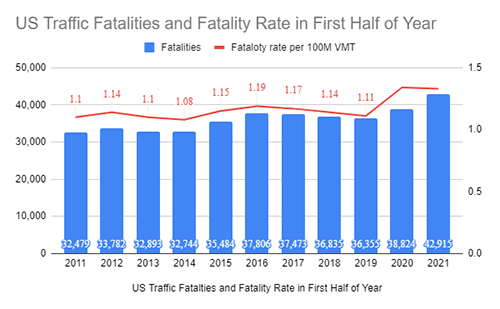
Key Safety Features to Consider in a Family Vehicle
Selecting a family vehicle calls for prioritizing safety as a top concern. Modern vehicles are equipped with numerous safety features to prevent accidents, safeguard passengers during collisions, and improve overall driving safety. This section will delve into the essential safety features to consider when choosing a family vehicle.
Many of the 2023 vehicles have the following standard safety features:
- Front and side airbags
- Seat Belt and knee airbags
- Automatic emergency braking
- Lane departure notification
- Pedestrian detection
- Rear cross-traffic alert
- Forward collision alert
- Adaptive headlights
- Haptic proximity sensors
- Adaptive cruise control
- Blind-spot monitoring
Active Safety Features
Active safety features are systems that help drivers prevent accidents by actively assisting them in controlling the vehicle or avoiding hazards. Many of these active safety features come standard on newer vehicles. Many of these active vehicle safety features are also required and mandated by the NHTSA.
Anti-lock Braking Systems (ABS)
ABS prevents wheels from locking up during an emergency, maintaining traction and allowing the driver to steer the vehicle. This technology significantly reduces the risk of skidding and losing control in situations that require sudden braking.
Electronic Stability Control (ESC)
ESC detects and reduces loss of traction by applying brakes to individual wheels and adjusting engine power. This helps the driver maintain vehicle control, especially in challenging road conditions or when taking evasive action to avoid an obstacle.
Adaptive Cruise Control (ACC)
ACC automatically adjusts vehicle speed to maintain a safe distance from the car ahead, reducing driver fatigue on long trips. This system can be beneficial on highways and in heavy traffic situations.
Lane Departure Warning (LDW)
LDW monitors lane markings and alerts the driver if the vehicle drifts out of the lane without a turn signal. This feature helps prevent unintended lane changes and collisions with other vehicles.
Passive Safety Features
Passive safety features are elements of a vehicle designed to protect occupants during a crash. Many of these passive vehicle safety features are also required and mandated by the NHTSA on all new vehicles.
Airbags
Airbags cushion the impact for vehicle occupants during a collision, reducing the risk of injury. Modern vehicles have multiple airbags, including front, side, and curtain, that protect against various crash scenarios. There have been advancements in airbag technology over the years that have improved safety and efficacy. Some of the latest innovations in airbag technology include:
- Adaptive airbags are designed to adjust their deployment based on factors such as the occupant’s size, seating position, and crash severity. This customization helps provide the right level of protection for individual passengers while minimizing the risk of injury caused by the airbag.
- Center airbags are a relatively new type deployed between the front seats during a side-impact collision. This airbag helps prevent occupants from colliding with each other or being thrown toward the point of impact, reducing the risk of injuries.
- Knee airbags deploy beneath the steering column or dashboard to protect the driver’s and front passenger’s knees and lower legs in a frontal collision. By distributing the impact force more evenly, knee airbags can reduce the risk of injury to the lower extremities.
- Traditionally, airbags have been focused on protecting front-seat occupants. However, some manufacturers are now incorporating rear seat airbags to improve safety for passengers in the back seats. These airbags can be integrated into the seatbelts or deployed from the rear seats’ sides.
Seatbelts
Seatbelts restrain occupants during crashes, minimizing movement and impact on the interior surfaces of car seats. The three-point seatbelt, now standard in all vehicles, provides superior protection compared to older designs.
Crumple Zones
Crumple zones are areas of a vehicle designed to absorb and redistribute impact energy in a crash, protecting the passenger cabin. By controlling the deformation of the vehicle, crumple zones reduce the force transmitted to occupants during a collision.
Side-Impact Protection
Side-impact protection includes reinforced door beams and side airbags that protect occupants in a side collision. These features are crucial in reducing injuries caused by the intruding vehicle or object during a side-impact crash.
Advanced Safety Technologies
Advanced safety technologies leverage cutting-edge technologies, such as sensors, cameras, radar, and sometimes LiDAR, to enhance vehicle safety and assist drivers. These systems can help prevent accidents, mitigate collision severity, and improve driving safety. Here are some examples of advanced safety technologies:
Automatic Emergency Braking (AEB)
AEB detects potential collisions and applies the brakes automatically if the driver doesn’t respond in time. This system can help prevent or mitigate the severity of frontal collisions, particularly with slower-moving or stationary vehicles.
Blind Spot Detection (BSD)
BSD monitors areas beside and behind the vehicle, alerting drivers to vehicles in their blind spots. This feature helps drivers avoid collisions when changing lanes or merging onto highways.
Rear Cross-Traffic Alert (RCTA)
RCTA warns the driver of approaching vehicles when backing out of a parking spot or driveway. This system enhances safety by reducing the risk of collisions with vehicles that may not be visible in the rearview mirror.
Lane Departure Warning (LDW) and Lane Keeping Assist (LKA)
LDW monitors lane markings, and this system alerts the driver if the vehicle drifts out of its lane without signaling. LKA goes further by gently correcting the steering or applying brakes to individual wheels to help the driver maintain the correct lane position.
Adaptive Cruise Control (ACC)
ACC automatically adjusts the vehicle’s speed to maintain a safe distance from the car ahead, reducing driver fatigue on long trips. Some advanced versions, called Traffic Jam Assist, can bring the vehicle to a complete stop and resume driving in stop-and-go traffic.
Traffic Sign Recognition (TSR)
TSR uses cameras to identify and interpret traffic signs, providing real-time information to the driver. This can make road sign recognition include speed limits, no-entry signs, and other essential road signs, helping drivers adhere to traffic rules.
Driver Monitoring System (DMS)
DMS uses cameras and sensors to monitor the driver’s attention and alertness. If the system detects signs of drowsiness or distraction, it will issue a warning or suggest a break, reducing the risk of accidents caused by driver fatigue or inattention.
Parking Assistance Systems
Parking assistance systems use sensors and cameras to aid drivers in parking by providing visual and auditory guidance. These systems can help prevent collisions with objects, other vehicles, or pedestrians while parking.
Surround View Camera Systems
Surround view camera systems provide a 360-degree view of the vehicle, combining images from multiple cameras to create a bird’s-eye view. This can be especially helpful when maneuvering tight spaces or navigating complex environments.
Understanding these key safety features of a new car and their benefits enables you to make informed decisions when selecting a family vehicle. Prioritizing safety will not only give you peace of mind.
Vehicle Child Safety Features
Child safety features are essential for families with young children. Some safety features to consider when selecting a family vehicle include
- LATCH (Lower Anchors and Tethers for Children) System: This system allows for easy and secure installation of child safety seats, reducing the risk of improper installation.
- Rear Door Child Safety Locks These locks prevent children from accidentally opening rear doors while the vehicle is in motion, reducing the risk of injury.
- Rear Seat Reminder: This feature alerts the driver to check the back seat when exiting the vehicle, reducing the risk of accidentally leaving a child.
- Integrated Booster Seats: Some vehicles come with built-in booster seats, eliminating the need for a separate booster seat while providing proper support and positioning for children who have outgrown their forward-facing child safety seat.
- 360-Degree Camera System: A surround-view camera system can be helpful when maneuvering in tight spaces or crowded areas, providing an additional layer of safety when children may be near the vehicle.
- Rear Cross-Traffic Alert: This system uses sensors to detect approaching vehicles when the driver backs out of a parking space or driveway, helping to prevent collisions with other cars, pedestrians, or children who may not be visible in the rearview mirror.
- Pedestrian Detection: The systems use cameras and sensors to identify pedestrians in the vehicle’s path, including children. They can automatically apply the brakes if necessary to avoid or mitigate a collision.
- Rearview Camera: A rearview camera has become a standard in many vehicles, providing a clear view of the area behind the vehicle and helping drivers avoid accidents when backing up.
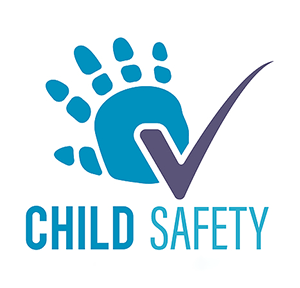
What is the Most Popular Family Vehicle
The most popular family vehicle, by class, is the Sport Utility Vehicle (SUV). The safest-rated and safest SUVs also have many standard safety features and a lot of extra room for gear and storage, so many people choose an SUV over a car or truck. SUVs also have more metal between the passengers and the road, giving them a safer crash-test rating than a car or minivan, as the Insurance Institute for Highway Safety (IIHS) rated. (i) In collisions, passenger deaths are nearly 60% higher in cars than in SUVs.
SUV Safety Features
Many 2023 vehicles have the following standard safety features:
- Front and side airbags
- Seat Belt and knee airbags
- Automatic emergency braking
- Lane departure notification
- Pedestrian detection
- Rear cross traffic alert
- Forward collision alert
- Adaptive headlights
- Haptic proximity sensors
- Adaptive cruise control
- Blind spot monitoring
IIHS Criteria For The Safest 2023 Vehicles by Class
The IIHS criteria for safest vehicles are broken down into vehicle classes that include: small cars, midsize cars, large cars, SUVs, midsize SUVs, large SUVs, minivans, and pickup trucks. The IIHS is also the standard many auto insurance companies use to evaluate vehicle safety. The following criteria determine the IIHS Top Safety Picks for 2023: crash test ratings, driver and passenger airbag tests, headlight ratings, and vehicle-to-pedestrian front crash prevention systems. The IIHS safety criteria and standards are updated every year, and additional criteria may be added in future years as crash prevention and mitigation systems improve.
Of all these vehicle classes, the SUV is the most popular class of family vehicle, according to ConsumerReports.org and IIHS safety ratings. This class of vehicle has proven to be very resilient in accidents. Here is a breakdown of the safest car by class for 2023, as rated by the IIHS for crash test and collision avoidance ratings:
Safest 2023 Small Cars
Most of these automobiles have received a 2023 Top Safety Pick or Top Safety Pick+ Award from the IIHS. Additionally, if the NHTSA has rated them, they will likely have achieved a five-star rating from this organization if you search for an economical city vehicle with impressive safety ratings and an abundance of standard safety features, this is the ideal choice for you. So, without further delay, here are the top-rated small cars in terms of safety for 2023.
- Acura Integra 4-Door Sedans
- Honda Civic 4-Door Hatchback
- Honda Civic 4-Door Sedan
- Mazda 4-Door Hatchback
- Mazda 4-Door Sedan
- Toyota Corolla 4-Door Hatchback
- Toyota Corolla 4-Door Sedan
Safest 2023 Midsize Cars
The ranking of the safest pre-owned and new midsize vehicles is determined by our examination of crash test results and safety evaluations from the U.S. government’s National Highway Traffic Safety Administration (NHTSA) and the Insurance Institute for Highway Safety (IIHS).
- Hyundai Sonata 4-Door Sedan
- Subaru Legacy 4-Door Sedan
- Subaru Outback 4-Door Wagon
- Toyota Camry 4-Door Sedan
Safest SUV For Family
The SUV outperformed cars and minivans in 2023 crash test simulations and safety ratings. The NHTSA tested these vehicles to help people make more informed decisions. The crash test criteria determine how well a vehicle protects its occupants in an accident. The criteria include; front-side collisions, side collisions, and rollovers. Based on these criteria, the NHTSA has a 5-star rating system, with zero being the worst and five being the best. The top 5-star SUV pics of the NHTSA are
- Honda CRV 4-Door SUV
- Honda HRV 4-Door SUV
- Lexus UX 4-Door SUV 4.
- Mazda CX30 4-Door SUV
- Mazda CX50 4-Door SUV
- Nissan Rogue 4-Door SUV
- Subaru Forester 4-Door SUV
- Subaru Solterra 4-Door SUV
What is the safest 2023 Midsize SUV
- Ford Explorer 4-Door SUV
- Hyundai Palisade 4-Door SUV
- Kia Telluride 4-Door SUV
- Mazda CX9 4-Door SUV
- Nissan Pathfinder 4-Door SUV
- Subaru Ascent 4-Door SUV
- Toyota Highlander 4-Door SUV
- Volkswagen ID4 4-Door SUV
Safest Luxury SUVs for 2023: Lexus Leads the Pack
Midsize luxury SUVs to dominate the IIHS Top Safety Pick and Top Safety Pick+ winners list. According to Motortrends, these Are the Safest Luxury SUVs for 2023:
- 2023 Lexus UX 2023
- Acura MDX 2023 Acura RDX
- 2023 Lexus NX
- 2023 Infiniti QX60
- 2023 Lexus NX
- 2023 Lexus RX
- 2023 Lincoln Nautilus
- 2023 Tesla Model Y
- 2023 Volvo XC90
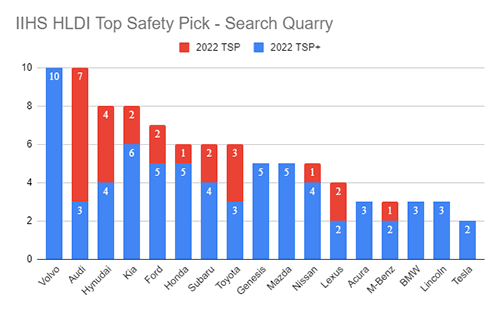
What Are the Safest Vehicles of All Time?
There is some debate as to the safest SUV of all time. Some speculate that the Tesla Model-Y is the safest midsize SUV for a family of 5 because it is an SUV that uses active safety features, such as autonomous driving technology, lane assist, collision assist and speed assist. However, there have been driving-related fatalities from this SUV, which technically disqualifies the Tesla Model-Y if zero fatalities are part of the criteria. Some of the deaths related to Tesla crashes have been reported due to issues with their autonomous driving technology. They are constantly improving upon this, and it has yet to be utterly autonomous driving; a driver still needs to be aware and behind the wheel. At some point, it is foreseeable that a fully autonomous driving SUV will make the list of safest vehicles of all time.
Is a Minivan Safer Than an SUV?
Many people question if SUVs are safer than minivans; the answer is it depends. It should be evident if you evaluate the IIHS crash test ratings of a specific make and model of minivan next to the particular SUV. Minivans and mid-sized SUVs rates are very similar in many safety categories, according to 2023 IIHS reporting.
Safest 2023 Minivans
The Toyota Sienna was the only minivan to secure a spot among the Top Safety Pick+ award winners. It received a “good” rating in every aspect of the test, except for pedestrian crash prevention, where the IIHS assessed it as “advanced.”
- Honda Odyssey Minivan
- Toyota Sienna Minivan
Safest 2023 Pickup Trucks
One of the key reasons the Rivian truck ranks the highest in the IIHS crash test rating is the truck’s roll-over rating. Since this electric truck has its batteries on the bottom of the vehicle’s frame, it has a lower center of mass, which makes it more stable and less likely to roll over than a conventional gasoline or diesel pickup truck. It also has additional airbags, such as knee airbags, that many of the pickups in this vehicle class do not.
- Rivian R1T Crew Cab Pickup Truck
- Toyota Tundra Crew Cab Pickup Truck
- However, Toyota Tundra Extended Cab Pickup Truck
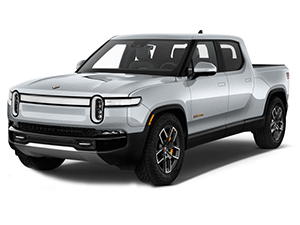
Safest Electric Cars According To The NHTSA
Safety must always be a primary concern when buying a new vehicle. By opting for one of the safest electric cars available, you can simultaneously minimize your carbon footprint and ensure the well-being of your family. Whether you commute daily or embark on long-distance journeys, these electric cars promise to deliver a secure and pleasurable driving experience. While electric vehicles are not fully autonomous yet, they have many safety features that non-electrical vehicles do not.
Here are the 10 Safest Electric Cars According To The NHTSA
- Tesla Model 3
- 2022 Tesla Model Y
- 2022 Volvo XC90 Recharge
- 2023 Chevrolet Bolt EV
- 2023 Nissan Leaf
- 2023 Hyundai Ioniq 5
- 2023 Volkswagen ID.4
- 2023 Audi E-Tron
- Kia Niro Electric
- 2023 Ford Mustang Mach-E BEV
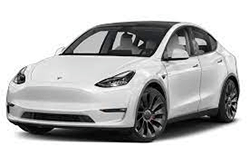
What Are the Safest Vehicles of All Time?
Vehicles with five-star ratings, or the highest rating for the safest ratings of all time, are determined by how many driver or passenger deaths and injuries. The following are the top handful of vehicles reported by CBS as being the safest vehicles of all time. These vehicles have a five-star safety rating and zero accident deaths:
- Audi A4 4WD 4-Door Sedan
- Honda Odyssey 4-Door SUV
- Kia Sorento 4-Door SUV
- Lexus RX 350 4WD 4-Door SUV
- Mercedes-Benz GL 4WD 4-Door SUV
- Subaru Legacy 4WD Wagon
- Toyota Highlander Hybrid 4WD 4-Door SUV
- Toyota Sequoia 4WD 4-Door SUV
- Volvo XC90 4WD Wagon
SUVs are the safest vehicles of all time. This vehicle class has become synonymous with vehicle family and high safety ratings. They can cost a bit more than a sedan or minivan, but obvious safety benefits come with this premium.
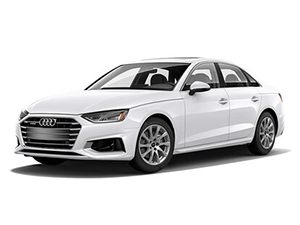
Top 5-Star Vehicle Crash Ratings By Manufacturer
- Acura MDX 4-Door SUV
- Audi Q4 eTron 4-Door SUV
- Chevrolet Traverse 4-Door SUV
- Ford Escape 4-Door SUV
- Honda Civic 4-Door Sedan
- Hyundai Tucson 4-Door SUV
- Jeep Grand Cherokee 4-Door SUV
- Kia Niro Electric 4-Door SUV
- Mazda MX 30 5-Door Hatchback
- Mitsubishi Eclipse Cross 4-Door SUV
- Nissan Pathfinder 4-Door SUV
- Toyota FAV4 4-Door SUV
- Volkswagen Taos 4-Door SUV
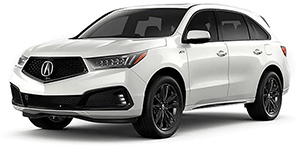
Tips For Researching a Safe and Affordable Family Vehicle
When looking for a safe family vehicle, it’s essential to consider various factors to ensure the well-being of your loved ones on the road. Here are some tips on researching and finding the safest family vehicle within your budget:
- Prioritize Safety Features: Compare the safety features of different models, and prioritize vehicles with advanced systems such as AEB, LDW, and BSM. These features can help prevent accidents and enhance overall driving safety.
- Consider vehicle size: While smaller vehicles may be more fuel-efficient and affordable, larger vehicles often provide better crash protection due to their size and weight. Consider a vehicle size that balances safety, fuel efficiency, and affordability.
- Research Vehicle Safety Ratings: Look for vehicles with top safety ratings from IIHS and NHTSA. These ratings reflect a vehicle’s performance in crash tests and other safety evaluations.
- Investigate Accident Statistics: Look for vehicles with low accident rates and a history of good safety performance in real-world situations.
- Evaluate the total cost of ownership: Consider factors such as purchase price, financing options, fuel efficiency, insurance costs, and maintenance expenses when calculating the total cost of owning a vehicle. The total cost of car ownership will give you a better idea of the overall affordability of the car.
- Read Consumer Reviews: Consult online reviews and forums for firsthand accounts of a vehicle’s safety, reliability, and overall performance.
- Test drive multiple models: Test drive various models that meet your safety and affordability criteria. Test driving multiple cars will allow you to compare different vehicles and make a more informed decision based on your preferences and comfort.
- Consider Certified Pre-Owned (CPO) Vehicles: CPO vehicles undergo a rigorous inspection and often come with an extended warranty, making them a more affordable option without compromising safety. Use Kelly Blue Book or Edmunds for price evaluation.
- Don’t rush the decision: Take your time when researching and selecting a safe and affordable fa; and vehicle. By carefully considering all factors, you’ll be more likely to find a car that meets your family’s safety and budgetary needs.
Conclusion
Selecting a safe family vehicle involves carefully considering crash ratings, accident statistics, and the availability of top safety pick awards for advanced safety and child-friendly features. By conducting thorough research in top safety and prioritizing cars with a strong top safety of record five stars, and top safety pick award, you can ensure that your family is protected and comfortable on the road, all while finding a vehicle within the family’s budget.
Safest Family Vehicle - FAQs
What safety features should I look for in a family vehicle?
When selecting a family vehicle, prioritize advanced safety technologies such as automatic emergency braking, blind-spot monitoring, lane departure warning, adaptive cruise control, and rear cross-traffic alert. Additionally, consider child safety features like the LATCH system, rear door child safety locks, and rear seat reminders. Good visibility, crashworthiness, and vehicle reliability are also important factors.How do I check the safety ratings of a vehicle?
To check a vehicle's safety ratings, consult reputable organizations such as the National Highway Traffic Safety Administration (NHTSA) and the Insurance Institute for Highway Safety (IIHS). Both organizations conduct extensive crash tests and evaluations, providing detailed safety ratings for various makes and models. You can also use the NHTSA Recall Tool to determine if a used vehicle has a recall or known safety issue. You can check the recall history of any vehicle by its vehicle identification number (VIN).Are larger vehicles always safer than smaller ones?
Larger vehicles often provide better crash protection due to their size and weight. However, finding a balance between safety, fuel efficiency, and maneuverability is crucial, as larger vehicles may be more challenging to navigate in tight spaces or congested traffic.How important is vehicle reliability when considering safety?
Vehicle reliability is an essential safety factor, as a reliable vehicle reduces the chances of breakdowns and accidents. Research the vehicle's reliability ratings and maintenance costs to ensure consistent performance and avoid compromising your family's safety.How do advanced safety technologies like automatic emergency braking and blind-spot monitoring contribute to overall safety?
Advanced safety technologies can help prevent accidents by alerting drivers to potential hazards, assisting in maintaining safe distances from other vehicles, and even automatically applying the brakes when necessary. These systems enhance overall driving safety and help reduce the likelihood of collisions.What are the critical child safety features to consider in a family vehicle?
Key child safety features include the LATCH system for secure car seat installation, rear door child safety locks, rear seat reminders to prevent children from being accidentally left in the car, and integrated booster seats for proper support and positioning.How does a vehicle's crashworthiness affect its safety performance?
Crashworthiness refers to a vehicle's ability to withstand and protect occupants in a collision. Vehicles with solid structural designs, energy-absorbing crumple zones, and reinforced passenger compartments provide better protection in the event of an accident, contributing to overall safety performance.Please be advised that the information accessed through SearchQuarry.com searches may not always be accurate or current, as we neither generate nor authenticate the data provided via our service. The reliability and precision of information are primarily contingent upon diverse public sources from which data is compiled. By utilizing SearchQuarry.com, you acknowledge your acceptance of the terms delineated in the SearchQuarry.com terms of service and our privacy policies. Information acquired via SearchQuarry.com must not be utilized for unlawful purposes such as stalking or harassing individuals, or scrutinizing public figures or celebrities. Individuals who contravene these directives may be subject to both civil and criminal legal proceedings and sanctions. It is explicitly stated that SearchQuarry.com does not function as a "consumer reporting agency" as defined by the Fair Credit Reporting Act ("FCRA"), and therefore, does not furnish "consumer reports" pursuant to the FCRA. SearchQuarry.com strictly prohibits the utilization of information garnered from search results (a) for discriminatory practices against any consumer; (b) for assessing a consumer's eligibility for personal credit, insurance, employment, housing, or government licenses or benefits; or (c) in any other manner that may impact a consumer's economic or financial status or standing.


Last Updated: 2023-04-17